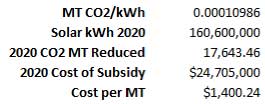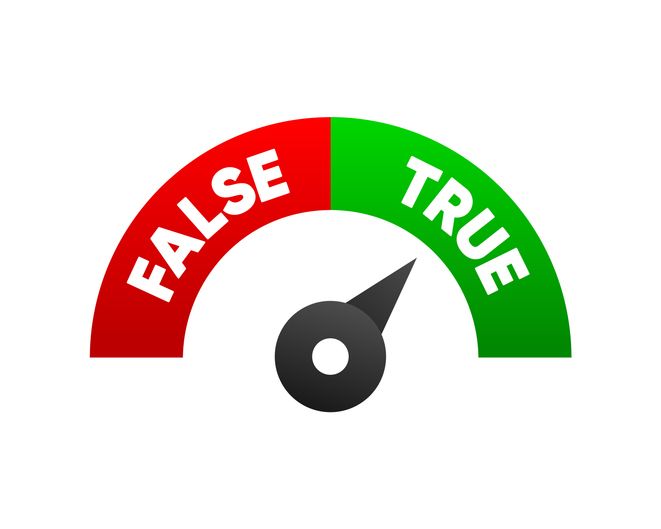![]() Download a PDF of this Legislatie Memo with sources and citations here.
Download a PDF of this Legislatie Memo with sources and citations here.
Introduction
A proposed revision to Washington’s already-expensive subsidies law for solar panels would require taxpayers to spend 100 times as much to reduce carbon emissions as the same amount elsewhere in the United States. Despite Western Washington’s status as one of the worst places in the United States for solar energy production, legislators continue to subsidize a technology that costs more and delivers less environmental benefit than virtually all other strategies.
House Bill 2346 would make that situation worse. It proposes to restructure the current solar subsidies, encouraging utilities to increase the number of customers with solar panels while reducing the amount of the per-user subsidy. As the accompanying fiscal analysis notes, the bill would cost about $24.7 million a year in 2020, when it is projected to reach its target of 146 Megawatts of installed solar power, producing about 160.6 million kilowatt hours (kWh) of energy that year. To put that in context, this level of electrical generation would represent about 0.1 percent of Washington’s total energy production.
There are some important considerations when looking at this bill.
Costs Are Extremely High
The legislation’s intent section says one goal is to “hedge against the effects of climate change, and attain environmental benefits.” Washington taxpayers would pay an enormous cost for those benefits.
Washington state is already a low-carbon state for energy. We emit about  one-quarter pound of CO2 per kWh produced. If solar power produced 160.6 million kWh in 2020, as the state projects, it would reduce carbon emissions by 17,643 metric tons (MT). Dividing the annual cost of the subsidy by that amount yields a cost to reduce one metric ton of CO2 emissions of about $1,400. By way of comparison, California emitters currently spend about $13.21 per metric ton of carbon reduced.
one-quarter pound of CO2 per kWh produced. If solar power produced 160.6 million kWh in 2020, as the state projects, it would reduce carbon emissions by 17,643 metric tons (MT). Dividing the annual cost of the subsidy by that amount yields a cost to reduce one metric ton of CO2 emissions of about $1,400. By way of comparison, California emitters currently spend about $13.21 per metric ton of carbon reduced.
Washington’s solar subsidies would spend 106 times as much per ton of carbon reduced. Compared to the open market, where carbon reduction projects can cost as little as $2 per ton, the bill proposes a policy that would be 700 times as expensive.
Environmental Benefits Are Tiny
The Department of Ecology estimates its proposed carbon regulation would reduce CO2 emissions in 2020 by 2.5 million MT and I-732, the revenue-neutral carbon tax initiative, is estimated to reduce 3 million MT in 2020. The proposed solar subsidy, by way of comparison would only reduce 17,643 MT, or 0.71 percent of the amount reduced by the proposed regulation and 0.59 percent of the reductions projected from I-732.
Ironically, some in the environmental community are complaining that I-732 may represent a $300 million annual tax cut, despite the fact that it reduces 3 million MTs of CO2, which they claim is their goal. At the same time, they support a $25 million expenditure that reduces one-half of one percent of that amount. The only reason to oppose a tax cut that effectively reduces carbon emissions, and support a subsidy that does not is that some activists appear more afraid of tax cuts than they are of climate change.
Additionally, according to the Department of Commerce, we need to reduce emissions by 10 million MT by 2020 compared to a business-as-usual approach. HB 2364’s proposed solar subsidy would achieve 0.18 percent of that goal.
By way of comparison, simply buying carbon reductions on the Northeastern carbon market, known as RGGI, which has been touted by Governor Inslee, we could reduce Washington emissions by nearly 3.3 million MT – 31 percent more than the total reduction produced by Governor Inslee’s proposed costly carbon regulation.
Solar Energy is a Waste in Washington State
Ultimately, the reason the numbers are so abysmal is due to a combination of two factors. First, Washington has a low-carbon economy already, with low levels of CO2 emitted per kilowatt hour. Shifting to solar energy only reduces CO2 emissions by a very small amount.
Second, Washington state is a poor geographic location for solar panels. The National Renewable Energy Laboratory looked at weather patterns between 1998 and 2009 and estimated the solar potential for regions of the United States. Using that data, they produced the following map showing the best and worst locations to locate solar panels.

After Alaska, Western Washington is the second-worst place in the country to place a solar panel. With such tiny solar potential, taxpayers have to pay huge amounts of money to get extremely small amounts of energy. It is far better to invest in projects that effectively reduce carbon emissions.
The proposed legislation does argue it will create jobs, although it doesn’t say how many. An approach to job creation that relies on continued taxpayer subsidies, however, is simply unsustainable and will fall short of promises.
Governor Gregoire promoted the biofuel mandate with the promise that it would create jobs and develop a biofuel industry. It did not.
The renewable energy mandate (I-937) was sold to the public on the promise it would make Washington a hub for renewable energy. It has not.
Officials in Oregon, where subsidies have been even more generous, are seeking to close down their renewable energy loan program, which will now require a taxpayer bailout.
The first rule of environmental policy – especially when we claim an issue is the “most important” issue we face – is to get the maximum environmental benefit for every dollar we spend. Solar subsidies in Washington state fail that test miserably.
**Nothing here should be construed as an attempt to aid or hinder the passage of any legislation before any legislative body.





